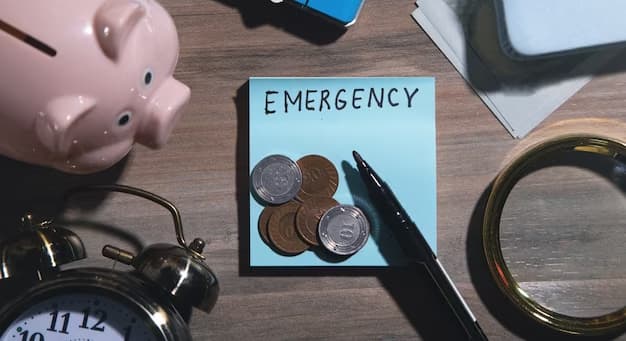Life is full of unexpected twists and turns, and sometimes, financial emergencies can catch us off guard. Whether it’s a sudden medical expense, car repair, or unexpected job loss, having an emergency fund in place can provide you with a safety net during challenging times. In this blog, we’ll delve into why building an emergency fund is essential for financial security and peace of mind, and we’ll provide practical tips on how to start and grow your emergency fund.
The Importance of an Emergency Fund
An emergency fund is a dedicated savings account set aside for unforeseen financial emergencies. Here’s why having one is crucial:
1. Financial Security
Life’s uncertainties can lead to unexpected expenses that may strain your finances. Having an emergency fund ensures you have the resources to cover urgent needs without relying on credit cards or loans, which can lead to debt.
2. Peace of Mind
Knowing you have a financial safety net can provide peace of mind and reduce stress during challenging times. With an emergency fund, you can navigate unexpected situations with confidence, knowing you are prepared.
3. Avoiding Debt
Without an emergency fund, you may be forced to take on debt to handle unexpected expenses. Having debt can lead to financial strain and interest payments that can take years to repay.
4. Flexibility in Decision-Making
Having an emergency fund gives you the flexibility to make important decisions without being solely driven by financial considerations. Whether it’s changing careers or pursuing further education, your emergency fund can provide the support you need during transitional periods.
5. Minimize Impact on Other Financial Goals
An emergency fund protects your other financial goals, such as saving for retirement, a down payment on a home, or a dream vacation. By having a safety net, you won’t need to dip into these funds in case of an emergency.
How to Build an Emergency Fund
Building an emergency fund may seem daunting, but with discipline and consistency, it is achievable. Here are practical steps to start and grow your emergency fund:
1. Set a Savings Goal
Determine how much you want to have in your emergency fund. A common recommendation is to aim for three to six months’ worth of living expenses. Start with a realistic initial goal and adjust it as your financial situation evolves.
2. Create a Budget
A budget is a powerful tool that helps you understand your income, expenses, and savings potential. Identify areas where you can cut back on spending to allocate more funds to your emergency fund.
3. Make Automatic Contributions
Set up automatic transfers to your emergency fund each time you receive your paycheck. By automating the process, you ensure consistent contributions without the temptation to spend the money elsewhere.
4. Prioritize Your Fund
Treat your emergency fund as a priority savings goal. Consider it a non-negotiable expense, just like paying your bills. Make contributions to your fund a regular part of your financial routine.
5. Use Windfalls Wisely
If you receive unexpected money, such as a tax refund or a work bonus, consider using a portion of it to boost your emergency fund. Windfalls can accelerate your progress in reaching your savings goal.
6. Reduce High-Interest Debt
If you have high-interest debt, such as credit card balances, consider directing some of your funds to pay it off. Reducing debt can free up more money for your emergency fund in the long run.
7. Avoid Temptations
Resist the temptation to dip into your emergency fund for non-urgent expenses. Keep it separate from your regular checking account to avoid accidental spending.
8. Celebrate Milestones
Celebrate each milestone you reach in building your emergency fund. Recognize your progress and take pride in your financial discipline.
Conclusion
Building an emergency fund is a fundamental step toward achieving financial security and peace of mind. It provides a safety net during unforeseen circumstances and helps you avoid falling into debt. Start small, be consistent, and make building your emergency fund a priority. As you progress, you’ll gain confidence and financial resilience, knowing you are prepared for whatever challenges life may bring.
Remember that emergencies can happen to anyone at any time. By taking the necessary steps now to build an emergency fund, you are taking control of your financial future and ensuring a more secure and stable tomorrow.

